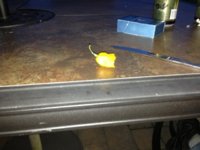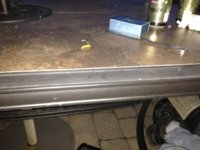Honeydew is a mixture of simple and complex sugars (oligosaccharide and polysaccharide starches), amino acids--as well as entire proteins and, in tobacco-feeding aphids, likely nicotine alkaloids. Ants like this stuff, and can often be seen collecting the honeydew from tobacco leaves....it's not so much the aphids, but their Chit on the leaves below them (they can turn nearly black)...
http://journals.plos.org/plosone/article?id=10.1371/journal.pone.0074656
http://www.researchgate.net/profile...references/links/02e7e51bad0bf3436e000000.pdf
http://www.ncbi.nlm.nih.gov/pmc/articles/PMC4242560/
My impression is that the sugars and starches, which together are the largest component of aphid honeydew, behave much like the polysaccharide gums often used as "cigar glue." When honeydew residual on kilned leaf occurs on relatively dry filler, it doesn't seem to make much of a difference in taste or aroma. On binder leaf, the presence of honeydew, often greatest at the stalk end of the leaf--which ends up at the head of a cigar, serves to replace cigar glue for the binder. The greatest drawback to honeydew on wrapper leaf (aside from being marginally disgusting) is that it adds a sweet taste to the head of the cigar.
Bob













